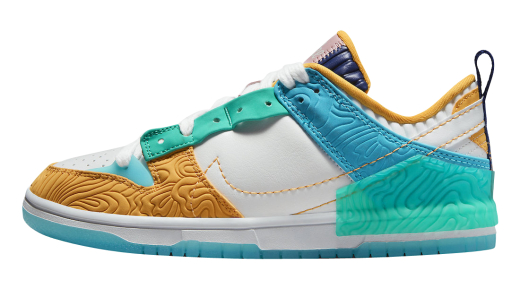Air Jordan 2
The Air Jordan 2 holds a distinct place in the storied legacy of Michael Jordan's signature sneaker line. Introduced in 1986, it was designed by Bruce Kilgore and Peter Moore, the latter known for his work on the iconic Air Jordan 1. Unlike its predecessor, the Air Jordan 2 was crafted in Italy, which gave it a luxurious flair uncommon in athletic footwear at the time. The use of premium materials like faux lizard skin and a sleeker silhouette differentiated it from other basketball sneakers, making it a standout in both performance and style. Jordan wore the Air Jordan 2 during a season plagued by injury, but when on the court, he delivered unforgettable performances that further cemented the sneaker's legendary status.
While the Air Jordan 2 might not have achieved the commercial success or cultural impact of some other models in the Air Jordan series, its influence remains significant. It set the stage for the brand's future premium iterations and established that a basketball shoe could double as a fashion statement. In recent years, the Air Jordan 2 has seen a resurgence, with retro releases and collaborations reigniting interest among sneaker aficionados. Its enduring appeal lies not only in its innovative design and association with Michael Jordan but also in its role in elevating the sneaker industry to new heights of design and craftsmanship.
History of Air Jordan 2
The History of the Air Jordan 2: A Journey Through Design, Culture, and Innovation
The Air Jordan 2 stands as one of the most intriguing chapters in the long legacy of the Air Jordan line—a brand synonymous with performance, style, and cultural impact. Born in an era of rising sneaker culture, the Jordan 2 is often regarded as a transition piece that laid the groundwork for subsequent, more iconic models. However, its importance cannot be overstated, as it was a pioneering force in design and luxury, setting the stage for the high standards that would come to define Air Jordans and, more broadly, the sneaker industry.
1. The Birth of a Legend
The Air Jordan line began its journey with the release of the Air Jordan 1 in 1985, a shoe that instantly captured the imaginations of basketball players and sneaker enthusiasts alike. When it came time to develop its successor, Nike understood they needed to up the ante. It wasn't just about creating a basketball shoe; it was about crafting an icon.
Nike turned to designers Bruce Kilgore and Peter Moore to create the Air Jordan 2. Released in 1986, the shoe had the daunting task of following up on the wild success of the Air Jordan 1. Kilgore and Moore, inspired by luxury and craftsmanship, decided that the Air Jordan 2 wouldn’t just be an athletic shoe but also an item that exuded elegance.
2. Design Philosophy
The Air Jordan 2 was a departure from the rebellious design of the Air Jordan 1. While the first model was loud, with its bold Nike swoosh and audacious colorways, the Air Jordan 2 adopted a more refined approach. The shoe was manufactured in Italy—a significant move that highlighted its luxury appeal. The idea was to blend performance with opulence.
Crafted from premium materials like high-quality leather, the Air Jordan 2 featured a faux lizard skin pattern, giving it a sophisticated texture. The Wings logo on the tongue, an emblem that was introduced with the Air Jordan 1, was retained but enlarged, thus making a bold statement. Unlike the Air Jordan 1, the Air Jordan 2 omitted the Nike Swoosh on its sides, allowing the silhouette to speak for itself—a fearless move that highlighted Michael Jordan's growing personal brand.
3. Technological Innovations
Beyond its luxury aesthetics, the Air Jordan 2 was revolutionary in terms of technological advancements. The shoe featured Nike’s innovative Air cushioning system, which was first introduced in the Nike Air Tailwind in 1979 but was refined for athletic performance in basketball shoes. Additionally, the shoe boasted an encapsulated Air unit in the heel, which provided enhanced support and comfort for Michael Jordan’s high-flying playing style.
By incorporating these technologies, the Air Jordan 2 marked a critical step in the evolution of performance basketball footwear. It wasn't just about how the shoe looked; it was fundamentally designed to meet the intense physical demands of professional basketball, specifically tailored to complement Michael Jordan’s unique talents on the court.
4. Market Reception
Despite its groundbreaking design and technology, the Air Jordan 2 had a mixed reception. In terms of sales, it didn’t quite reach the heights of its predecessor, the Air Jordan 1. Several factors contributed to this, including the shoe's high retail price—a reflection of its premium construction.
Nevertheless, the Air Jordan 2 played an essential role in establishing the Air Jordan line as a brand not afraid to take risks. While it may not have achieved the commercial success of other models, it solidified the ethos that would guide subsequent designs: innovation, excellence, and style.
5. The Cultural Impact
Though the Air Jordan 2 did not generate the same level of frenzy as some other models, it held a significant cultural impact. It helped cement Michael Jordan’s persona not just as an athlete but as a style icon. The shoe embodied the blend of performance and luxury that came to define MJ’s off-court persona—bridging the gap between sportswear and high fashion.
Furthermore, the Air Jordan 2 sent a powerful message about brand identity. By choosing to omit the Nike Swoosh, the design team made a statement that "Air Jordan" was not merely another line under Nike; it was a standalone brand with its own unique identity.
6. Legacy and Retros
In the years following its initial release, the Air Jordan 2 has been honored through multiple retros and special editions. These retros have often been met with greater enthusiasm than the original release, benefiting from the nostalgic allure and the growing sneaker culture.
One notable retro was the 1994 version, which reintroduced the shoe to a generation who might have missed its first appearance. Subsequent retros in 2004, 2008 (as part of the Countdown Pack), and 2010 continued to spotlight the model, each adding new colorways and occasionally updating some materials but largely staying true to the original design.
7. Collaborations and Special Editions
In recent years, collaborations involving the Air Jordan 2 have further boosted its appeal. Notable designers and brands such as Just Don and Off-White have put their unique spin on the classic silhouette, generating considerable hype and bringing the model back into the limelight. These collaborations often blend modern aesthetics with the original luxurious ethos of the Air Jordan 2, producing highly coveted releases that appeal to both old-school purists and new-age sneakerheads.
8. The Air Jordan 2 in Popular Culture
The influence of the Air Jordan 2 extends into popular culture, as it frequently appears in music videos, films, and television shows. Celebrities and influencers have been sighted wearing the shoe, further elevating its status as a timeless piece of footwear.
Its sleek, minimalist design has allowed it to transcend the world of basketball, becoming a versatile lifestyle shoe. Its luxurious construction has even inspired fashion designers to incorporate similar elements into their own lines, blurring the lines between athletic footwear and high fashion.
9. Looking Forward
As the Air Jordan brand continues to grow, the significance of the Air Jordan 2 is undeniable. It set important precedents for innovation, risk-taking, and design excellence. Future iterations and retros of the Air Jordan 2 will continue to honor this legacy while also adapting to modern sensibilities and technological advancements.
Current trends in sneaker culture indicate that consumers are increasingly interested in stories, heritage, and authenticity. The Air Jordan 2, with its rich history and unique characteristics, fits perfectly into this narrative, ensuring its relevance for future generations.
Conclusion
The Air Jordan 2 may often be overshadowed by its more celebrated siblings in the Air Jordan lineage, but its role in shaping the brand's identity and pushing the boundaries of sneaker design cannot be understated. From its luxurious Italian craftsmanship to its advanced performance features, the Air Jordan 2 remains a symbol of innovation and style.
In appreciating the Air Jordan 2, one understands that it wasn’t just a shoe; it was a bold statement of intent from Nike and Michael Jordan. It told the world that Air Jordans were here to stay, changing the landscape of athletic footwear and impacting broader cultural trends. Even as sneaker technology and fashion continue to evolve, the Air Jordan 2 remains a timeless piece—testament to a pivotal moment in the history of sports and style.























